How to calculate macros for weight loss
Our expert gives us the lowdown on how to calculate macros for weight loss


When it comes to nutrition and dropping pounds, learning how to calculate macros for weight loss is a great place to start.
Although we’ll delve a little deeper below, macros are essentially the building blocks of everything we eat. Getting the balance right between the three macros (carbohydrates, fats and protein) is important when it comes to body composition; from weight loss through to muscle gain.
After all, diet and nutrition are pivotal for weight loss, with how much we eat playing a role in losing weight. Protein, an essential macro for satiety, is a key player in the weight loss equation; we’ve even rounded up some of the best protein powders for weight loss here at Fit&Well.
But how do you actually calculate macros for weight loss? Plus, how would someone go about tracking these macros in their day to day life? We asked Meghan Foulsham, nutritionist at Fresh Fitness Food, how to navigate the world of macros.
What are macros?
First up, the big question: what are macros?
“Macronutrients, or ‘macros’ are components in our diet required in relatively large quantities, hence the name macro,” says Meghan. They include protein, carbohydrates and fat, which all have different responsibilities within the body.
In terms of calories, protein and carbohydrates contain four calories per gram, whereas fat contains nine calories per gram. Fat is the more calorie dense of the three macros.
Get the Fit&Well Newsletter
Start your week with achievable workout ideas, health tips and wellbeing advice in your inbox.
In short, Meghan says that protein is needed for growth and repair, as well as the maintenance of optimal health. “Protein is also important for hormone and enzyme production and skin, hair, and bone health,” she says.
Lean sources of protein include chicken, turkey, eggs, salmon, beans and lentils. As for carbohydrates, the body’s main source of energy, these are needed for brain and organ function, as well as physical activity.
“Without carbohydrates, your body struggles to function properly and you often end up feeling run-down and fatigued.”
Simple carbohydrates include processed and refined sugars such as table sugar and syrups. Complex carbs however provide a slower release of energy. These include quinoa, brown rice, sweet potato and whole-grain bread.
Finally, fat, which is needed as an energy source, to provide the body with essential fatty acids helping with nerve and brain health, assisting in the production of hormones and also absorbing vitamins A, D, E and K. ‘Healthy’ fats can be found in foods such as nuts, seeds, salmon and avocado.
How do you calculate macros for weight loss?
If you’re hoping to shed some pounds and drop body fat, then working out a correct macro split can be useful.
“People often go for one of two methods; a balanced approach or ‘low-carb’, which often means removing or decreasing your starchy carbohydrates such as rice and potatoes, and focussing on veggies instead,” says Foulsham. “To calculate your macros, you first need to calculate an appropriate calorie requirement for you and whatever goals you’re trying to achieve.”
Check out our guide on how to track macros for the full formula of how to work out your calorie needs.
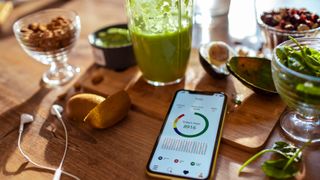
The number you end up with will be your ‘maintenance’ calories. You'll need to adjust this based on your weight-loss goal.
“If you’re looking for fat loss, we recommend a 20% deficit (multiply the calories by 0.8)," says Foulsham. "Or if a more gradual rate of fat loss is what you’re after, and aiming to maintain muscle mass, a 10% deficit may be more appropriate (multiply by 0.9).”
Naturally, you need to be in a calorie deficit to lose weight. Once you’ve worked out your calorie requirement, you can calculate your appropriate macro breakdown.
Calculating your macros
To work out the split of carbs, protein and fats, Meghan says that calculating protein first is the best idea.
“The amount of protein you need is based on your body weight, and how much exercise you do, as well the type of exercise.”
A rough guide for protein is 1.2 -2kg of protein per bodyweight however, if you’re someone who is lifting weights several times a week or taking part in more intense exercise, then you will want to be at the upper end of this protein intake.
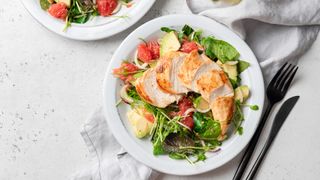
To work out your protein intake, Meghan uses the example of a CrossFit athlete who trains five times a week and weighs 75 kg. In this scenario, you’d multiply 75 x 2 which comes to 150, or basically 150g of protein per day.
“To get this in terms of calories, multiply the amount in grams by four (as there are four calories per gram of protein) to get 600 calories.”
Then, if your total calorie requirement for the day is 1800 calories, you’ll need to split the other 1200 calories between carbs and fat.
Keep in mind that fat contains nine calories per gram whilst carbs contain four calories per gram. So if you split this 1200 calories 50/50, it would equate to 150g carbs (600 divided by four), and 67g fat (600 divided by nine). Or you can split it differently.
“Someone that does a lot of endurance training will likely need a higher proportion of carbs,” adds Foulsham, so the split should be adapted to suit.
How to hit your macro goals
If you really want to hit your macros, then you’re likely going to need to track everything you eat and drink. This can be frustrating, but luckily, apps such as MyFitnessPal are super useful as they allow you to input a range of different food and drinks. The app then tallies up your macros and the amount of calories you’re consuming. You may need to become pretty handy with a set of scales so you can weigh out your foods; you’ll be surprised at the difference just 1 tbsp of oil can make to your macros!
To make hitting and tracking your macros a little easier, Foulsham says that meal prepping in bulk on the weekends can help – if you have a lot of tupperware!
“Cook everything in large portions, and weigh out the set quantities of each component into individual tupperware.”
There are also several different meal prep companies that can tailor meals and macros to suit you, so the stress of tracking is no longer on your shoulders.
The key thing with macros is consistency. You won’t see results after just one day of hitting your macros, but keep at it, and you will lose weight. Not seeing results? It might be time to tweak your macros and calories; sometimes it can be a little bit of a case of trial and error.
Lucy is a freelance journalist specializing in health, fitness and lifestyle. She was previously the Health and Fitness Editor across various women's magazines, including Woman&Home, Woman and Woman’s Own as well as Editor of Feel Good You. She has also previously written for titles including Now, Look, Cosmopolitan, GQ, Red and The Sun.
She lives and breathes all things fitness; working out every morning with a mix of running, weights, boxing and long walks. Lucy is a Level 3 personal trainer and teaches classes at various London studios. Plus, she's pre- and post-natal trained and helps new mums get back into fitness after the birth of their baby. Lucy claims that good sleep, plenty of food and a healthy gut (seriously, it's an obsession) are the key to maintaining energy and exercising efficiently. Saying this, she's partial to many classes of champagne and tequila on the rocks whilst out with her friends.
-
 A personal trainer says "you’ll never do sit-ups again" after trying these five exercises
A personal trainer says "you’ll never do sit-ups again" after trying these five exercisesWorkout I tried her recommended moves—here’s what I thought
By Jennifer Rizzuto Published
-
 This small Pilates tool can tone your entire body—here’s how to use it
This small Pilates tool can tone your entire body—here’s how to use itPilates Small, affordable and surprisingly effective
By Jennifer Rizzuto Published
-
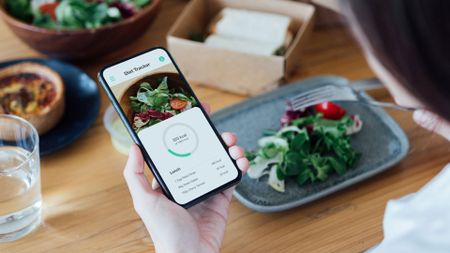 Six weight loss myths debunked by a nutritionist
Six weight loss myths debunked by a nutritionistWeight loss Can any of these weight loss myths actually help you to lose weight?
By Anna Gora Published
-
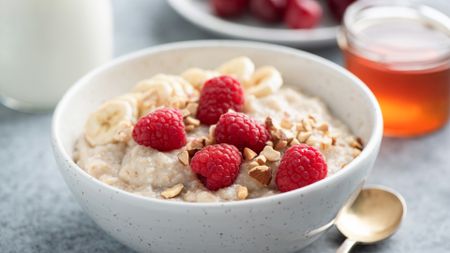 How to lose weight without counting calories
How to lose weight without counting caloriesWeight loss Finding a weight loss method that suits your lifestyle can be difficult. Here’s how to lose weight without counting calories, according to a dietician
By Alice Porter Published
-
 How long does it take to lose weight?
How long does it take to lose weight?Weight Loss Weight loss is personal — but how long does it take to lose weight on average? We asked a dietician to explain
By Alice Porter Published
-
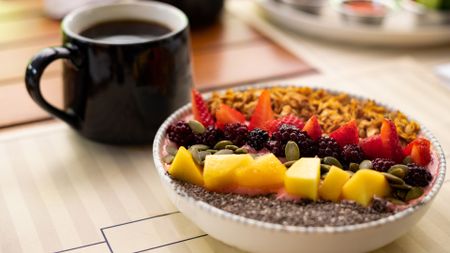 7 dietitian-approved weight loss hacks that actually work
7 dietitian-approved weight loss hacks that actually workThere’s no cheat-sheet to weight loss, but these dietitian-approved weight loss hacks can actually make a difference
By Mollie Davies Last updated
-
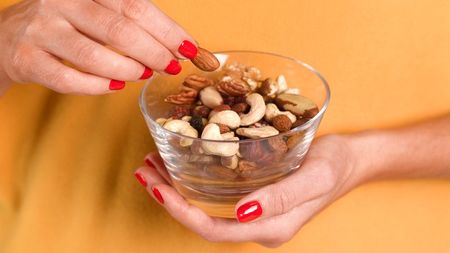 Seven nutrition myths busted – including why snacking isn’t bad for you
Seven nutrition myths busted – including why snacking isn’t bad for youNutrition Eating well can be tricky without knowing the facts about how nutrition works. Here are some nutrition myths that you might have believed until now
By Alice Porter Published
-
 Eight reasons you can’t lose weight – and what to do about it
Eight reasons you can’t lose weight – and what to do about ithow to Sticking to a diet plan but still can’t lose weight? Here are eight things that could be preventing you from seeing changes to your body
By Alice Porter Published
-
 The most common weight loss mistakes and how to avoid them
The most common weight loss mistakes and how to avoid themhow to Struggling to shed those extra pounds? You may be making these weight loss mistakes
By Meg Walters Published
-
 Does drinking water help you lose weight?
Does drinking water help you lose weight?Weight loss Does drinking water help you lose weight? We look at the facts and the links between hydration and weight management
By Lou Mudge Published
